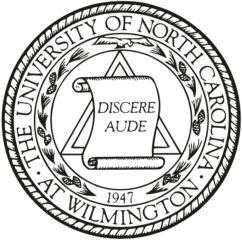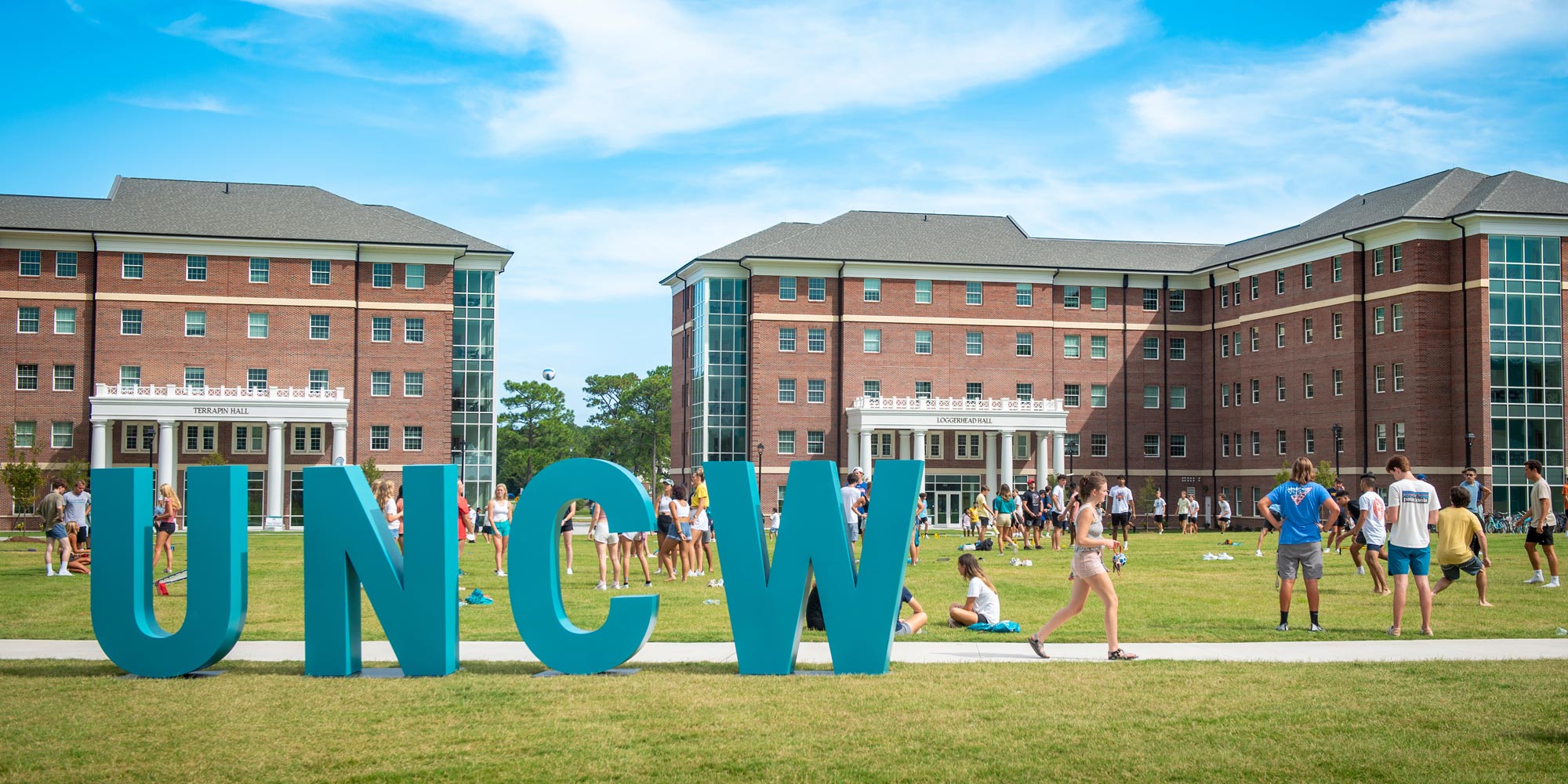
From The University of North Carolina-Wilmington
Via

5.23.24
Cristina Ortiz
The amazing pyramids of Egypt … What a treasure to behold! But have you ever wondered why some of them – including the famous Giza pyramid complex – were built in the middle of nowhere, in a desert? And, how could Egyptians transport the tons-heavy blocks there? They were definitely smart and incredible builders. Still, there must be an explanation.
__________________________
-A mystery: How did the ancient builders of Egypt transport the heavy stones found today in Egyptian pyramids?
-New research suggests a now-dry river played a role in the building of the pyramids. Scientists call this river the Ahramat. It was once a branch of the Nile. A major drought, some 4,200 years ago, might have led to its disappearance.
-Satellite imagery, geophysical surveys and sediment cores confirm the existence of the Ahramat branch and its usage by ancient Egyptians, with many pyramids having causeways ending at the riverbanks of the Ahramat.
__________________________

Egyptian pyramids. Image via Gaurav D Lathiya/ Unsplash.
Now, according to a new paper from the peer-reviewed journal Communications Earth & Environment – published on May 16, 2024 – the answer is simple. A chain of pyramids was built where, once, there was a river. We now call that ancient river the Ahramat, and it was a branch of the famous and very necessary Nile River.
Fig. 1: The water course of the ancient Ahramat Branch.

a Shows the Ahramat Branch borders a large number of pyramids dating from the Old Kingdom to the 2nd Intermediate Period and spanning between Dynasties 3 and 13. b Shows Bahr el-Libeini canal and remnant of abandoned channel visible in the 1911 historical map (Egyptian Survey Department scale 1:50,000). c Bahr el-Libeini canal and the abandoned channel are overlain on satellite basemap. Bahr el-Libeini is possibly the last remnant of the Ahramat Branch before it migrated eastward. d A visible segment of the Ahramat Branch in TDX is now partially occupied by the modern Bahr el-Libeini canal. e A major segment of the Ahramat Branch, approximately 20 km long and 0.5 km wide, can be traced in the floodplain along the Western Desert Plateau south of the town of Jirza. Location of e is marked in white a box in a. (ESRI World Image Basemap, source: Esri, Maxar, Earthstar Geographics).
See the science paper for further instructive material with images.
It’s well known that civilizations settle where there are sources that will let people thrive. And to be sure, one of our most valuable sources is water. So, why would this advanced civilization build the famous pyramids in a desert? The answer, in fact, could well be this branch of the Nile, which has now disappeared.
There are thousands of pyramids in the world. Notably, around 100 are located in Egypt. And 31 of the Egyptian pyramids – including the Giza pyramid complex – were built along this 40-miles-long (64-km-long) stretch, called the Ahramat. These pyramids are concentrated in what is now a narrow, inhospitable desert. But when the ancient Egyptians built them over a nearly 1,000-year period, starting approximately 4,700 years ago, that area of the Western Desert – part of the Sahara – wasn’t entirely dry, scientists say.
Formerly, the Nile River used to have several branches. And the Ahramat branch was also close to the ancient Egyptian city of Memphis. This means that the pyramids were concentrated near the city and the river. Indeed, the pyramids would have been easily accessible via the river branch at the time they were built.
In addition, the authors of the paper found that many of the pyramids had causeways, which ended at the riverbanks of the Ahramat branch. This is evidence that the ancient Egyptians used the river for transporting construction materials, among other things.
How do researchers know?
Also, sedimentary evidence suggests that the Nile used to have a much higher discharge, with the river splitting into several branches.
With this in mind, the authors of the paper used satellite imagery to look for a former river branch running along the foothills of the Western Desert Plateau, very near to the pyramid fields.
In addition, they also used geophysical surveys and sediment cores to confirm the presence of river sediments and former channels beneath the modern land surface.
What happened to the river?
Over time, this branch of the Nile River became buried beneath farmland and desert. The authors suggest that an increased build-up of windblown sand, linked to a major drought which began approximately 4,200 years ago, could be one of the reasons for the Ahramat’s eventual silting up.
And, just like it happens to Venetians with their channels and gondolas, this now-dry river was an extremely useful source for Egyptians.
The results emphasize the significance of the Nile as a vital route and cultural lifeline for ancient Egyptians, while also shedding light on the historical impact of environmental changes on human society.
Moreover, further exploration to uncover additional extinct branches of the Nile could assist in prioritizing archaeological digs along its shores and safeguarding Egyptian cultural legacy.
See the full article here .
Comments are invited and will be appreciated, especially if the reader finds any errors which I can correct.
five-ways-keep-your-child-safe-school-shootings
Please help promote STEM in your local schools.

The University of North Carolina Wilmington
The University of North Carolina is a public research university in North Carolina. After being chartered in 1789, the university first began enrolling students in 1795, making it one of the oldest public universities in the United States. Among the claimants, the University of North Carolina is the only one to have held classes and graduated students as a public university in the eighteenth century.
The first public institution of higher education in North Carolina, the school opened its doors to students on February 12, 1795. North Carolina became coeducational under the leadership of President Kemp Plummer Battle in 1877 and began the process of desegregation under Chancellor Robert Burton House when African-American graduate students were admitted in 1951. In 1952, North Carolina opened its own hospital, University of North Carolina Health Care, for research and treatment, and has since specialized in cancer care through University of North Carolina’s Lineberger Comprehensive Cancer Center which is one of only 51 national NCI designated comprehensive centers.
The university offers degrees in over 70 courses of study. All undergraduates receive a liberal arts education and have the option to pursue a major within the professional schools of the university or within the College of Arts and Sciences from the time they obtain junior status. It is classified among “R1: Doctoral Universities – Very high research activity”, and is a member of The Association of American Universities. According to the National Science Foundation, UNC annually spends over $1.20 billion on research and development, ranking very high in the nation.
The University of North Carolina’s faculty and alumni include Nobel Prize laureates, Pulitzer Prize winners, and Rhodes Scholars. Additional notable alumni include a U.S. President, a U.S. Vice President, Governors of U.S. States, members of the United States Congress, and a number of Cabinet members as well as CEOs of Fortune 500 companies, Olympians and professional athletes.
Students can participate in over 550 officially recognized student organizations.
Chartered by the North Carolina General Assembly on December 11, 1789, the university’s cornerstone was laid at Chapel Hill on October 12, 1793, near the ruins of a chapel, chosen because of its central location within the state. The first public university chartered under the US Constitution, The University of North Carolina is one of three universities that claims to be the oldest public university in the United States and the only such institution to confer degrees in the eighteenth century as a public institution.
During the Civil War, North Carolina Governor David Lowry Swain persuaded Confederate President Jefferson Davis to exempt some students from the draft, so the university was one of the few in the Confederacy that managed to stay open. Chapel Hill suffered the loss of more of its population during the war than any village in the South, and when student numbers did not recover, the university was forced to close during Reconstruction from December 1, 1870, until September 6, 1875. Following the reopening, enrollment was slow to increase and university administrators offered free tuition for the sons of teachers and ministers, as well as loans for those who could not afford attendance.
Following the Civil War, the university began to modernize its programs and onboard faculty with prestigious degrees. At Chapel Hill creation of a new gymnasium, funding for a new Chemistry laboratory, and organization of the Graduate Department were accomplishments touted by University of North Carolina president Francis Venable at the 1905 “University Day” celebration.
Despite initial skepticism from university President Frank Porter Graham, on March 27, 1931, legislation was passed to group the University of North Carolina with the State College of Agriculture and Engineering and
Women’s College of the University of North Carolina, now the University of North Carolina at Greensboro to form the Consolidated University of North Carolina.
In 1963, the consolidated university was made fully coeducational, although most women still attended Woman’s College for their first two years, transferring to other campuses as juniors, since freshmen were required to live on campus and there was only one women’s residence hall. As a result, Woman’s College was renamed the “University of North Carolina at Greensboro”. In 1955, The University of North Carolina officially desegregated its undergraduate divisions.
During World War II, the University of North Carolina was one of 131 colleges and universities nationally that took part in the V-12 Navy College Training Program which offered students a path to a Navy commission.
During the 1960s, the campus was the location of significant political protest. Prior to the passage of the Civil Rights Act of 1964, protests about local racial segregation which began quietly in Franklin Street restaurants led to mass demonstrations and disturbance. The climate of civil unrest prompted the 1963 Speaker Ban Law prohibiting speeches by communists on state campuses in North Carolina. The law was immediately criticized by university Chancellor William Brantley Aycock and university President William Friday, but was not reviewed by the North Carolina General Assembly until 1965. Small amendments to allow “infrequent” visits failed to placate the student body, especially when the university’s board of trustees overruled new Chancellor Paul Frederick Sharp’s decision to allow speaking invitations to Marxist speaker Herbert Aptheker and civil liberties activist Frank Wilkinson; however, the two speakers came to Chapel Hill anyway. Wilkinson spoke off campus, while more than 1,500 students viewed Aptheker’s speech across a low campus wall at the edge of campus, christened “Dan Moore’s Wall” by The Daily Tar Heel for Governor Dan K. Moore. A group of the University of North Carolina-Chapel Hill students, led by Student Body President Paul Dickson, filed a lawsuit in U.S. federal court, and on February 20, 1968, the Speaker Ban Law was struck down. In 1969, campus food workers of Lenoir Hall went on strike protesting perceived racial injustices that impacted their employment, garnering the support of student groups and members of the University and Chapel Hill community.
The university was placed on probation by its accrediting agency in 2015. It was removed from probation in 2016.
That same year, the public universities in North Carolina had to share a budget cut of $414 million, of which the Chapel Hill campus lost more than $100 million in 2011. This followed state budget cuts that trimmed university spending by $231 million since 2007; Provost Bruce Carney said more than 130 faculty members have left the University of North Carolina since 2009, with poor staff retention. The budget cuts in 2011 greatly affected the university and set this increased tuition plan in motion and the University of North Carolina students protested. On February 10, 2012, the University of North Carolina Board of Governors approved tuition and fee increases of 8.8 percent for in-state undergraduates across all 16 campuses.
In June 2018, the Department of Education found that the University of North Carolina had violated Title IX in handling reports of sexual assault, five years after four students and an administrator filed complaints. The university was also featured in The Hunting Ground, a 2015 documentary about sexual assault on college campuses. Annie E. Clark and Andrea Pino, two students featured in the film, helped to establish the survivor advocacy organization End Rape on Campus.
In August 2018, the university came to national attention after the toppling of Silent Sam, a Confederate monument which had been erected at Chapel Hill in 1913 by the United Daughters of the Confederacy. The statue had been dogged by controversy at various points since the 1960s, with critics claiming that the monument invokes memories of racism and slavery. Many critics cited the explicitly racist views espoused in the dedication speech that local industrialist and the University of North Carolina Trustee Julian Carr gave at the statue’s unveiling on June 2, 1913, and the approval with which they had been met by the crowd at the dedication. Shortly before the beginning of the 2018–2019 school year, the Silent Sam was toppled by protestors and damaged, and has been absent from campus ever since. In July 2020, the University’s Carr Hall, which was named after Julian Carr, was renamed the “Student Affairs Building.” Carr had supported white supremacy and also the Ku Klux Klan.
After reopening its campus in August 2020, the University of North Carolina-Chapel Hill reported 135 new COVID-19 cases and four infection clusters within a week of having started in-person classes for the Fall 2020 semester. On 10 August, faculty and staff from several of the University of North Carolina’s constituent institutions filed a complaint against its board of governors, asking the system to default to online-only instruction for the fall. On 17 August, the University of North Carolina’s management announced that the university would be moving all undergraduate classes online from 19 August, becoming the first university to send students home after having reopened.
Notable leaders of the university include the 26th Governor of North Carolina, David Lowry Swain (president 1835–1868); and Edwin Anderson Alderman (1896–1900), who was also president of Tulane University and the University of Virginia. On December 13, 2019 the University of North Carolina System Board of Governors unanimously voted to name Kevin Guskiewicz the university’s 12th chancellor.
The university enrolls more than 28,000 students from all 100 North Carolina counties, the other 49 states, and 47 other countries. Chapel Hill is the third largest university in North Carolina, just behind North Carolina State University and The University of North Carolina at Charlotte in enrollment. State law requires that the percentage of students from North Carolina in each freshman class meet or exceed 82%. The student body consists of over 18,000 undergraduate students and 11,000 graduate and professional students. Racial and ethnic minorities comprise over 30% of the University of North Carolina undergraduate population. Applications from international students have more than doubled. Eighty-nine percent of enrolling first year students have reported a GPA of 4.0 or higher on a weighted 4.0 scale. The University of North Carolina students are strong competitors for national and international scholarships. The most popular majors at the University of North Carolina are biology, business administration, psychology, media and journalism, and political science. The University of North Carolina-Chapel Hill also offers 300 study abroad programs in 70 countries.
At the undergraduate level, all students must fulfill a number of general education requirements as part of the Making Connections curriculum, which was introduced in 2006. English, social science, history, foreign language, mathematics, and natural science courses are required of all students, ensuring that they receive a broad liberal arts education. The university also offers a wide range of first year seminars for incoming freshmen. After their second year, students move on to the College of Arts and Sciences, or choose an undergraduate professional school program within the schools of medicine, nursing, business, education, pharmacy, information and library science, public health, or media and journalism. Undergraduates are held to an eight-semester limit of study.
U.S. News & World Report ranks UNC-Chapel Hill very high among the public universities nationally among both public and private universities in the United States. The Wall Street Journal ranks The University of North Carolina-Chapel Hill very highly among public universities.
The university was named a Public Ivy by Richard Moll in his 1985 book The Public Ivies: A Guide to America’s Best Public Undergraduate Colleges and Universities, and in later guides by Howard and Matthew Greene. Many of The University of North Carolina-Chapel Hill’s professional schools have achieved high rankings in publications such as Forbes magazine, as well as annual U.S. News & World Report surveys. US News & World Report ranked the Chapel hill School of Medicine very high in primary care and in research. U.S. News & World Report ranks UNC-Chapel Hill business school’s MBA program very high in the nation. U.S. News & World Report has ranked the UNC Gillings School of Global Public Health very highly in the United States. The UNC Eshelman School of Pharmacy was ranked very highly among pharmacy schools in the United States by U.S. News & World Report. Business Week has ranked The University of North Carolina-Chapel Hill business school’s Executive MBA program very highly in the United States. The University of North Carolina also offers an online MBA program, MBA@UNC, that is ranked very highly in the country for Best Online MBA Programs. Other highly ranked schools include journalism and mass communication, law, library and information science, medicine, dentistry, and city and regional planning. Nationally, The University of North Carolina-Chapel Hill is in the top ten public universities for research. Internationally, the QS World University Rankings ranked North Carolina very highly in the world.The Wall Street Journal has ranked UNC-Chapel Hill very highly among public universities.
